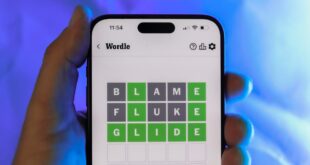Oura has just announced its Ring 4, the newest version of its popular health and sleep tracker. The new model has an updated sensing system that allows it to adapt readings to specific fingers, a titanium design and slightly longer battery life, accompanied by a redesigned version of the Oura app.
The Oura Ring 4 starts at $349 and begins shipping on Oct. 15, with orders opening on Oct. 3. That makes it about $50 more expensive than the base Heritage Oura Ring Gen 3, which has one flatter edge compared to the completely round design of the Ring 4 and $349 Horizon Ring Gen 3.
Oura made headlines in the early days of the pandemic for its use by the NBA to monitor players’ health, and it’s also been spotted on the fingers of celebrities like Jennifer Aniston and Gwyneth Paltrow. But there are a growing number of wearables makers looking to challenge Oura, the biggest of which is Samsung, which launched its first health tracking Galaxy Ring earlier this year. Smart rings aside, companies like Samsung and Google’s Fitbit are taking a page from Oura with scores for metrics like readiness and sleep, contributing to Oura’s competition.
With the Ring 4, Oura is betting that enhancing core functionality like design, battery life, accuracy and comfort can help it stand out amongst new and existing rivals.
“So we asked ourselves these questions,” Jason Russell, the company’s vice president of consumer software product, said regarding the Ring 4. ” ‘How can we give you a more complete picture of your health? How can we make this more comfortable? How can we make this for more people?’ ”
The Oura Ring 4 tracks the same health, sleep and wellness metrics as the Ring Gen 3, with most of its health tracking features requiring a $6 monthly subscription. But Russell told CNET that the new, more accurate sensing platform could “unlock future innovation,” hinting that new features may eventually arrive.
Read more: Why Oura’s CEO Isn’t Worried About Samsung’s Galaxy Ring
The Oura Ring’s new titanium design and sizes
The Oura Ring 4
While many of the Oura Ring 4’s most significant upgrades happen behind the scenes through algorithms and LEDs, the health tracker is also getting an aesthetic change. The Oura Ring 4 is available in additional sizes, including size 4 and 5 on the smaller side and sizes 14 and 15 on the larger end. The Gen 3, by comparison, comes in sizes 6 through 13, while the Galaxy Ring ranges from 5 through 13 in size.
The Oura Ring 4 will come in brushed silver, black, gold, rose gold, silver and stealth, similar to the Horizon version of the Oura Ring Gen 3. But the black edition has a new glossy appearance, which has a striking look that fits nicely alongside my jewelry when wearing it.
The Oura Ring Gen 4’s finishes.
While the Gen 3 includes a titanium exterior, Oura is flaunting the Ring 4 as being its first ring to use titanium on both the exterior and interior. It’s also lighter than the Gen 3 at 3.3 to 5.2 grams compared to the previous generation ring, which ranges from 4 to 6 grams depending on the size.
The Oura Ring Gen 3 (left) and Oura Ring 4.
Based on my experience wearing the Ring 4, it certainly feels lighter compared to the Gen 3, although the band is slightly wider than the Galaxy Ring’s. It’s the changes on the inner surface of the ring that are more noticeable, however. Oura has eliminated the domes located on the inner lining of the ring, which gives it a much sleeker and seamless shape compared to the Gen 3.
Oura Ring 4 should be more accurate with longer battery life
The Oura Ring 4 has the same health and wellness features as the Gen 3, but with a new sensing system that should be more accurate.
The Oura Ring 4’s headlining attribute isn’t so much a new feature as it is refinements of the ring’s existing health tracking capabilities. Oura claims its fourth-generation ring comes with big upgrades regarding accuracy thanks to its new “smart sensing” system, which uses an algorithm to tailor readings based on an individual’s finger.
“Not all fingers are the same,” Russell said. “We have different skin tones. Our arteries and veins are in different positions, and that can result in variation in signal quality.”
Additionally, the ring has more than twice as many signal pathways compared to the Gen 3, which means it has more data to work with. The smart sensing algorithm chooses the best signal pathway depending on which one is getting the strongest reading, which can vary depending on the ring’s positioning and other factors.
According to Russell, it’s the combination of this new algorithm, the Ring 4’s additional LEDs and photo detectors and titanium design that should lead to more accurate results. The Ring 4 has two triple LEDs, each of which are equipped with red, green and infrared light, for example, while the Gen 3 only has one red, green and infrared LED system. The titanium interior is also better at blocking stray light that might interfere with signal quality, Russell says. These changes should also make it so there are fewer gaps in your data in the Oura app, although it’s impossible to know whether Oura delivers on these promises without extensively testing the ring.
The Oura Ring 4
But Oura conducted an external research study that involved participants wearing the Oura Ring Gen 3 and Ring 4 overnight in a sleep clinic and found that there was a 120% improvement in signal quality for blood oxygen sensing, 15% more accuracy in determining a user’s breathing disturbance index, 7% fewer gaps in daytime heart rate and 31% fewer gaps in nighttime heart rate.
That breathing index statistic is particularly interesting given the recent emphasis on sleep apnea detection in wearables. Apple brought the ability to detect potential signs of sleep apnea to the Apple Watch Series 9, Ultra 2 and Series 10 with WatchOS 11, while Samsung introduced similar functionality on the Galaxy Watch 7 earlier this year.
No Oura Ring models, including the Ring 4, can detect possible sleep apnea signals, nor is Oura claiming that they can. But Russell did say that breathing disturbances data gathered from the Oura Ring could be useful to show your doctor if you suspect it may be an issue.
“This is going to help it be an even stronger tool, because we’re just able to detect more breathing disturbances than we would have with Gen 3,” Russell said.
Battery life is also getting a boost, with Oura claiming up to eight days instead of the Gen 3’s maximum seven-day longevity. That should make it slightly easier to track sleep regularly without having to power up the ring, and it exceeds Samsung’s battery life claims for the Galaxy Ring by a day for the larger sizes and two days for the smaller sizes.
Read more: The Apple Watch Series 10 Proves the iPhone Needs This Feature
The new Oura app
Oura’s app is getting a redesign.
Oura is reorganizing its app in a way that should make individual health metrics easier to find. The new version of the app will be split into three tabs: Today, Vitals and My Health, compared to the existing version which has separate sections for readiness, sleep, activity and resilience in addition to the home screen.
The Today tab, as the name implies, shows contextually relevant and important information, such as health metrics that you’ve prioritized during the Oura setup process, or timely ones based on the time of day. The Vitals app, meanwhile, houses individual health metrics and scores, which you can tap into to view more details. And the My Health tab will be for monitoring longterm health trends that may change slowly over time, like cardiovascular age and heart health. The app redesign will roll out broadly to all Oura Ring users, not just those who buy the Ring 4.
It’s an important change, because the way information is presented — especially for a device like the Oura Ring, which doesn’t have a screen — goes a long way in determining how useful health and fitness trackers are. There’s also a delicate balance in improving the app and how data is presented while preserving all the metrics and tools users have come to love, as Google’s Fitbit found out the hard way earlier this year when users criticized the app’s redesign.
I’ll have more to say about the Oura Ring 4 once I’ve had the opportunity to test it. But if it lives up to Oura’s claims, the more accurate sensing system could set up the Oura Ring for a future in which we can learn even more about our health from our fingers.
 synnbiob
synnbiob


